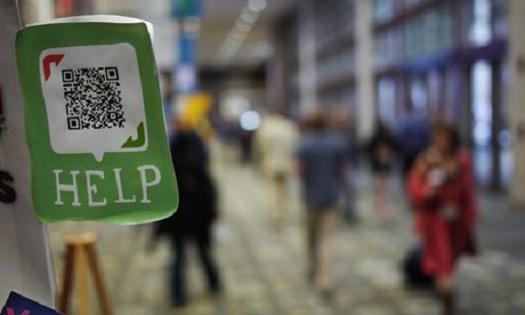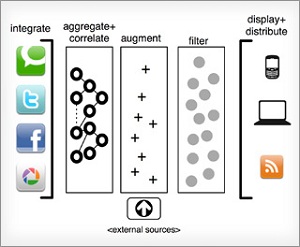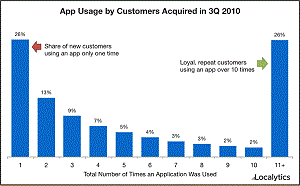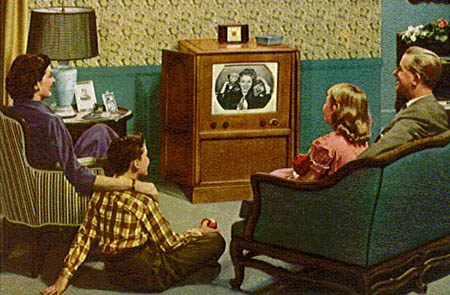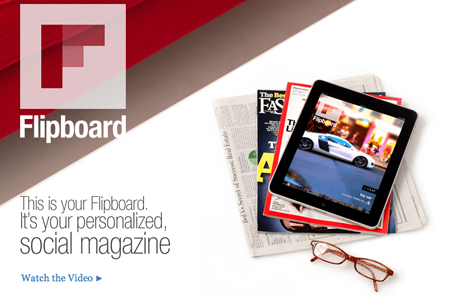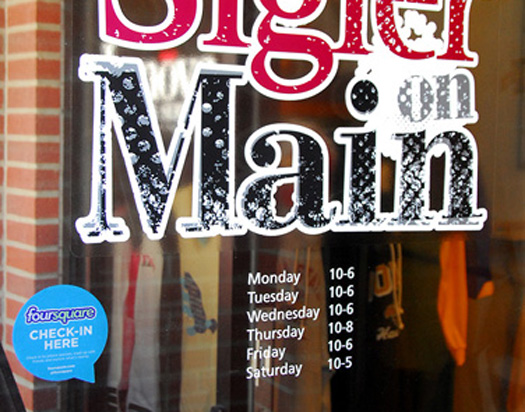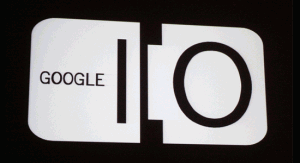Tweetworthy: SXSW 2011, BroadFeed, Junkyard Jumbotron, FOMO, and More
1. SXSW 2011: The internet is over
"We've been hearing about this moment in digital history since at least 1988, when the Xerox technologist Mark Weiser coined the term'ubiquitous computing', referring to the point at which devices and systems would become so numerous and pervasive that 'technology recedes into the background of our lives'."
2. Google Search app for iPhone--a new name and a new look
"You’ll see that there are now more ways to interact with the app. When browsing through search results or looking at a webpage, you can swipe down to see the search bar or change your settings. For those who use other Google apps, there’s an Apps button at the bottom of the screen for rapid access to the mobile versions of our products."
3. The Next Wave in Social Content Aggregation
"BroadFeed is a great test bed for [Organic] to try out various relevance algorithms for content, as well as to gather observations about how users interact with stream content on the iPad."
4. Mobile service connects users with help during emergencies
"When trouble arises, the app immediately alerts and connects the user's personal safety network via voice conference, sms and email, thereby speeding the arrival of help. Guardly's LocationAssure technology pinpoints the user's precise GPS location and provides information about what resources are nearby."
5. MIT Media Lab: Junkyard Jumbotron
"Junkyard Jumbotron is a project from the MIT Center for Future Civic Media. Essentially, it has created software so that laptops or phones can be ganged together to form a large display. Anyone can take part, and participants can email their own pictures to become part of the virtual screen."
6. FOMO (Fear of Missing Out) and Social Media
"'FOMO' stands for 'Fear of Missing Out' and it’s what happens everywhere on a typical Saturday night, when you’re trying to decide if you should stay in, or muster the energy to go to the party. At SxSW I see people wondering if they’re at the wrong party—the party where they are is lame, feels uncool, has too much brand advertising or doesn’t have anyone there they’d want to hook up with—and so they move on to the next party where they have to wait in line too long, can’t get a beer, or don’t find their friends, and so move on to the next venue where…and so on."
7. 26% of Mobile Application Users are Fickle -- or Loyal
"With over 10 billion downloads from just Apple’s App Store, it’s clear that people are very willing to try new apps. It’s equally clear that app developers and publishers need to look beyond downloads and focus marketing resources on attracting and retaining the quarter of customers who tend to become loyal users."
8. How to Hack Video Screens in Times Square
"What do you think: viral ad for the newest iPhone, CNN, and NYC tourism; or an exciting new development in the world of culture jamming?"
9. Foursquare: The importance of platforms, and how we're extending ours
"Today, through the foursquare Venue Project, we’re breaking out the Venues API, making it available at high rate limits (so even the most popular apps can use it without worrying about hitting a limit), with simple “userless” authentication, new endpoints, and with clear guidelines for use."
10. GroupMe Won the SXSW Group Messaging Wars
"SXSW isn’t about hanging out with the same groups of people all the time, but rather about having variety of exclusive options. In practice group messaging is kind of weak on the exclusivity thing, because you’re almost always roped into groups with at least one person you don’t like, which prevents you from sharing potentially useful information regarding your whereabouts."
Tweetworthy is a weekly roundup of the most shared tweets from @MobileBehavior. You can follow us on Twitter here.

